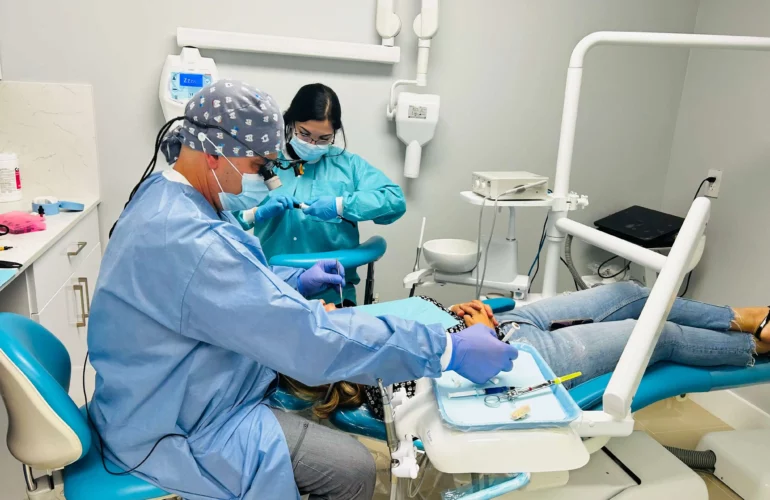Have you ever stopped to wonder why teeth whitening is done differently around the globe? What’s behind this obsession with a perfect white smile? Is it just a trend or something deeper, tied to our cultural roots and values? From ancient remedies to modern-day techniques, teeth whitening is not just a cosmetic procedure; it’s a fascinating window into how different cultures perceive beauty and status.
As we embark on this journey, let’s uncover the stories and traditions behind the pursuit of the perfect smile, exploring how it varies from one corner of the world to another.
Historical Context of Teeth Whitening Across Cultures
A long time ago, having white teeth was a big deal in many cultures. In ancient Egypt, people would mix ground pumice stone and vinegar to clean their teeth. The Romans used something really surprising – they used urine for its ammonia to make their teeth whiter. Back then, having white teeth was a sign of wealth and status. Different places had their own unique ways of making teeth look good.
Contemporary Views on Teeth Whitening
In today’s world, especially in Western countries like the US and Europe, having white teeth is very popular. It’s all over TV and social media. People think that a bright smile makes them look better and feel more confident.
In Eastern countries like Japan and China, traditionally, people didn’t focus much. They valued natural beauty. But now, with more influence from the West, more people in these countries are getting interest.
In other parts of the world, like Africa and Latin America, teeth whitening can mean different things. For example, in some African communities, people might file or dye their teeth for beauty. In Latin America, a white smile often means you’re healthy and take good care of yourself. Each culture has its unique view on what makes teeth beautiful.
The Role of Socioeconomic Factors
It isn’t cheap. In many places, only people with more money can afford to get it done. This shows the differences between rich and poor. In some countries, only wealthy people can regularly visit dentists or buy whitening products, while others might never have the chance.
Health and Ethical Considerations
Whitening your teeth isn’t always risk-free. Sometimes, the chemicals used can hurt your gums or damage your teeth if you’re not careful. And there’s another thing to think about. Some people feel like they need to whiten their teeth just to fit in or look good, which can be a lot of pressure.
The Future of Teeth Whitening
What will happen with teeth whitening in the future? With new technology, there might be safer and cheaper ways to get a bright smile. And as people from different cultures share ideas, the way we think about it might change too.
Thinking About Getting Your Teeth Whitened in Tamiami?
Teeth whitening isn’t just about looking good – it’s a reflection of diverse cultural practices around the world. From ancient traditions to modern desires for that perfect smile, this practice brings together people from various backgrounds in a shared quest for beauty.
Here at Dental Blush, we celebrate this rich cultural tapestry. We offer a variety of options to meet your unique needs, whether you’re honoring your cultural heritage with a bright smile or simply aiming to boost your confidence. Get in touch with us to book your teeth whitening appointment today!
Conclusion
So, teeth whitening is more than just a beauty trend. It shows us how different cultures think about beauty and health. It’s interesting to see how something as simple as teeth whitening can tell us so much about people from all over the world. And that’s definitely something to smile about!
FAQs on Cultural Perspectives of Teeth Whitening
Q: Why do people in different cultures whiten their teeth?
A: People from different cultures whiten their teeth for various reasons. In some cultures, it’s a sign of beauty and social status. In others, it might influence by modern beauty standards seen in media. Traditional beliefs and practices also play a role in how people view and approach teeth whitening.
Q: How did ancient civilizations whiten their teeth?
A: Ancient civilizations had unique methods for teeth whitening. The Egyptians used a paste made from ground pumice stone and vinegar, while the Romans used urine for its ammonia content. These practices were often seen as a way to display wealth and social status.
Q: Are there any health risks associate with teeth whitening?
A: Yes, there can be health risks if is not done properly. These can include gum irritation, tooth sensitivity, and damage to the enamel. It’s important to follow safe practices and consult with a dental professional.
Q: How has globalization affected cultural perspectives on teeth whitening?
A: Globalization has led to a blending of cultural beauty standards. Western ideals of beauty, including white teeth, have spread worldwide, influencing practices in many countries. However, traditional views and methods still persist in various cultures.
Q: Is teeth whitening accessible to everyone around the world?
A: No, it is not equally accessible globally. In many regions, it’s considered a luxury due to its cost. Access to dental care and whitening products varies significantly, often depending on economic factors and healthcare systems in different countries.
Dental Blush is located at 12260 SW 8th St Suite 226, Miami, FL 33184.
Whether you choose to make an appointment by calling (305) 553-0666 or simply drop in any day and any time. We are always here to serve you at Dental Blush.





